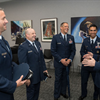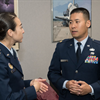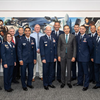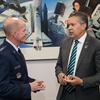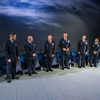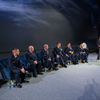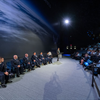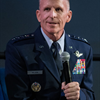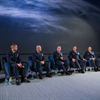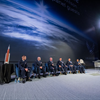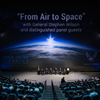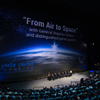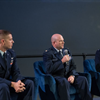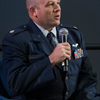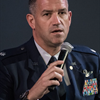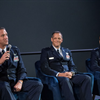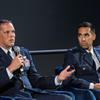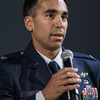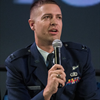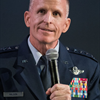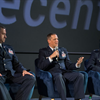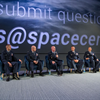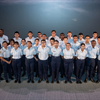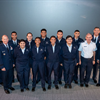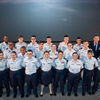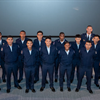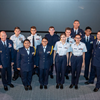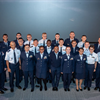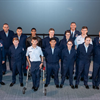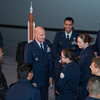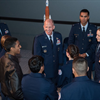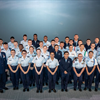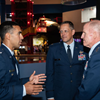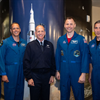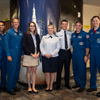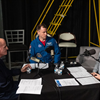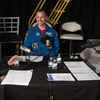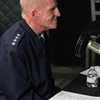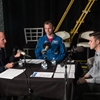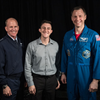Aiming High ... All the Way to Space
Ongoing partnership between Air Force and NASA portends a bright future for all who take to the skies — and beyond.
A fortuitous visit from General Stephen Wilson, Vice Chief of Staff for the United States Air Force (USAF), during a week when approximately 125 fliers from around the world also convened in Houston for the 32nd Annual Planetary Congress, was a convenient reason to hold an inspiring outreach session with other USAF Airmen at Space Center Houston. Attended by an audience consisting of junior ROTC (JROTC) cadets, team members from NASA’s Johnson Space Center and curious Space Center Houston guests, the Airmen, along with General Wilson, described how STEM learning can open untold doors for all young people who want to make a difference.
It’s the reason General Wilson, like many others, went into the Air Force in the first place.
“I wanted to go see something different and be part of making a difference,” General Wilson said. “I got to go fly airplanes most of my career. Now I’m ‘flying a desk.’”
Though he playfully downplays his current assignment, the former Aggie assists the Chief of Staff in organizing, training and equipping 685,000 active-duty Guard, Reserve and civilian forces serving in the United States and overseas.
As decorated as the general is, it was apparent that he was also star struck by the Airmen detailed to Johnson sharing the stage with him: NASA astronauts Colonel Raja Chari and Lieutenant Colonel Bob Hines; Lieutenant Colonel Chas Tacheny, Human Spaceflight Support Search and Rescue; Major Craig Murphy, NASA-Air Force flight surgeon; and Captain Chris Jordan, Department of Defense Human Spaceflight Payloads. The airmen shared their personal stories and detailed how NASA partners with the Air Force for mutual benefit.
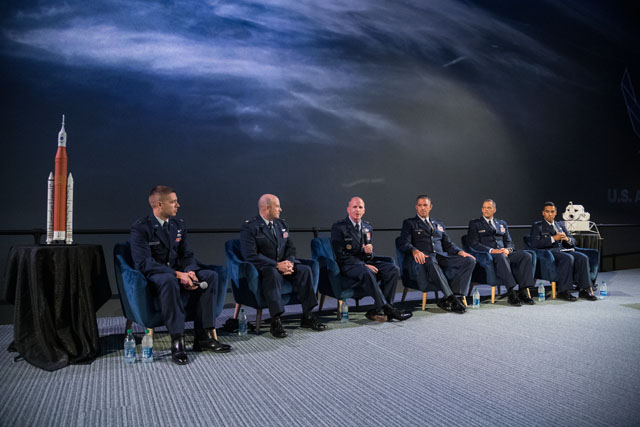
The distinguished panel, from left: Captain Chris Jordan, Major Craig Murphey, General Stephen Wilson, Lt. Col. Chas Tacheny, Lt. Col Bob Hines and Col. Raja Chari. Image Credit: NASA/James Blair
“Our military has been involved in our space program since 1959. The Air Force has a primary role for our champions of humanity here,” Lt. Col. Tacheny said, describing the unique search-and-rescue missions undertaken for astronauts returning from space. “There are places these capsules can go that would take us hours and hours to get there—and that’s when we’re postured to do it. It’s not an easy fact when we talk about how expansive the globe really is. We still have to put our eyeballs on the capsule.”
Captain Jordan, meanwhile, shared information on some of the groundbreaking research payloads the military has sent to the International Space Station that replicates wound healing—but in space.
“These environments are better replicated in space to get the data,” Captain Jordan explained. What the military gleans from these experiments could eventually improve battlefield medicine techniques.
The group also touched on the Air Force as a natural conduit to a lasting and satisfying career. Major Craig Murphy, who stated he had lacked direction, enlisted “hoping to get some vision.”
He said of his unique path to becoming a flight surgeon, “From not knowing what you want to do, the Air Force is a great opportunity to shine among the stars here. I didn’t have money to go to college, so the Air Force seemed a good option. (There’s) a lot of training and experience that goes along with it, but it’s a fascinating and fun ride.”
The Air Force astronauts, Lt. Col. Hines and Col. Chari, echoed the excellent advice for the young JROTC cadets and others listening.
Col. Chari, who joked that he may have decided to join the Air Force at the influence of “Top Gun,” emphasized that doing what you love—whatever that is—can still lead to becoming an astronaut.
“If you want a job that is just very rewarding and makes you want to go there, there are a lot of opportunities for that in the Air Force,” Col. Chari said. “Don’t be ‘us.’ We need ‘not us.’ (The Air Force and NASA) need people who have operational experience, scientific and engineering backgrounds. There is no one path to becoming an astronaut. We’re just the tip of the iceberg for a whole army of folks. Find what you enjoy doing … and do that.”
Lt. Col. Hines added, “Don’t get yourself in the position where you become one dimensional. We have mountain climbers in our (astronaut) class, people who have been on expeditions to Antarctica. Get outside of a single-channel specialty.”
In the great melting pot of America, our differences make us stronger, whether in the military or the cosmos.
Lt. Col. Hines likened it to the inclusive environment of the space station, where nations come together to further science and technology for all humankind.
“When you get different backgrounds and people from all these different cultures, what they bring are different perspectives to problems—different potential solutions,” Lt. Col. Hines said. “That’s one of the great things of being able to include so many different types of people in a program. That is what makes the organization great.”
After the panel event, General Wilson also spent time at Johnson, having lunch with astronauts who are also active duty Air Force and taking part in “Houston, We Have a Podcast” with Expedition 59/60 astronaut Col. Nick Hague (USAF) and host Gary Jordan from the Communications and Public Affairs Office. The podcast episode is scheduled to air in late October.

Recording for “Houston, We Have a Podcast.” From left are General Wilson, Col. Nick Hague and Gary Jordan. Image Credit: NASA/James Blair
See more images from his visit below.








